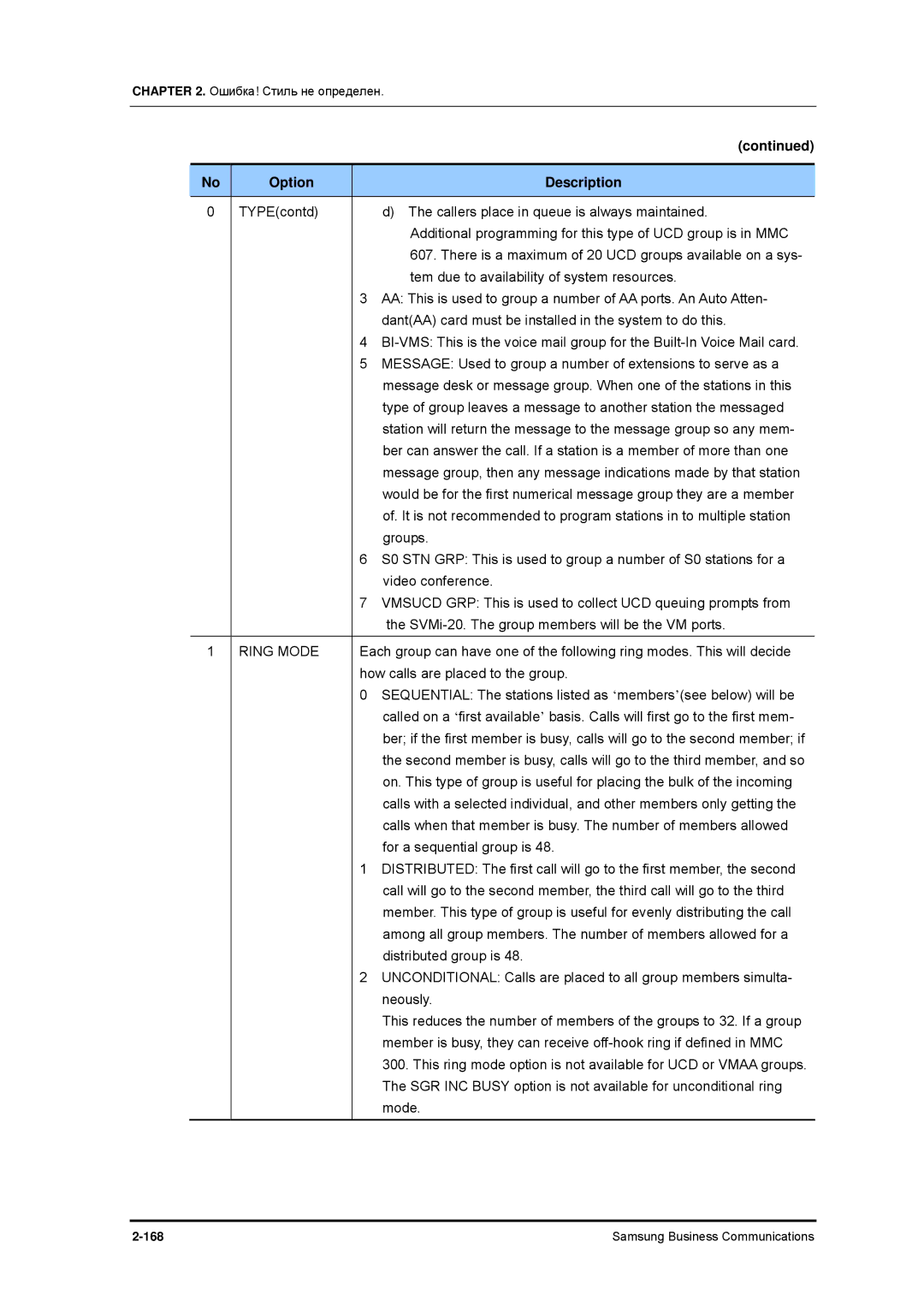
CHAPTER 2. Ошибка! Стиль не определен.
(continued)
No | Option | Description |
0 | TYPE(contd) | d) The callers place in queue is always maintained. |
|
| Additional programming for this type of UCD group is in MMC |
|
| 607. There is a maximum of 20 UCD groups available on a sys- |
|
| tem due to availability of system resources. |
|
| 3 AA: This is used to group a number of AA ports. An Auto Atten- |
|
| dant(AA) card must be installed in the system to do this. |
|
| 4 |
|
| 5 MESSAGE: Used to group a number of extensions to serve as a |
|
| message desk or message group. When one of the stations in this |
|
| type of group leaves a message to another station the messaged |
|
| station will return the message to the message group so any mem- |
|
| ber can answer the call. If a station is a member of more than one |
|
| message group, then any message indications made by that station |
|
| would be for the first numerical message group they are a member |
|
| of. It is not recommended to program stations in to multiple station |
|
| groups. |
|
| 6 S0 STN GRP: This is used to group a number of S0 stations for a |
|
| video conference. |
|
| 7 VMSUCD GRP: This is used to collect UCD queuing prompts from |
|
| the |
1 | RING MODE | Each group can have one of the following ring modes. This will decide |
|
| how calls are placed to the group. |
|
| 0 SEQUENTIAL: The stations listed as ‘members’(see below) will be |
|
| called on a ‘first available’ basis. Calls will first go to the first mem- |
|
| ber; if the first member is busy, calls will go to the second member; if |
|
| the second member is busy, calls will go to the third member, and so |
|
| on. This type of group is useful for placing the bulk of the incoming |
|
| calls with a selected individual, and other members only getting the |
|
| calls when that member is busy. The number of members allowed |
|
| for a sequential group is 48. |
|
| 1 DISTRIBUTED: The first call will go to the first member, the second |
|
| call will go to the second member, the third call will go to the third |
|
| member. This type of group is useful for evenly distributing the call |
|
| among all group members. The number of members allowed for a |
|
| distributed group is 48. |
|
| 2 UNCONDITIONAL: Calls are placed to all group members simulta- |
|
| neously. |
|
| This reduces the number of members of the groups to 32. If a group |
|
| member is busy, they can receive |
|
| 300. This ring mode option is not available for UCD or VMAA groups. |
|
| The SGR INC BUSY option is not available for unconditional ring |
|
| mode. |
|
|
|
Samsung Business Communications |
